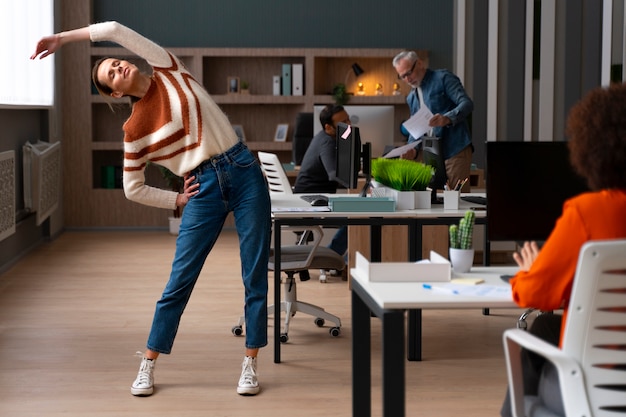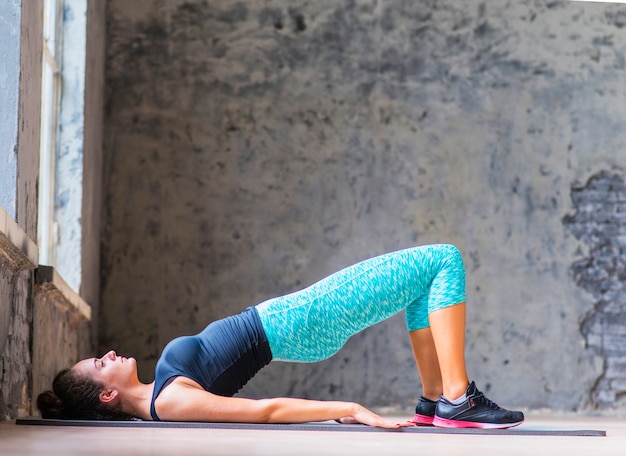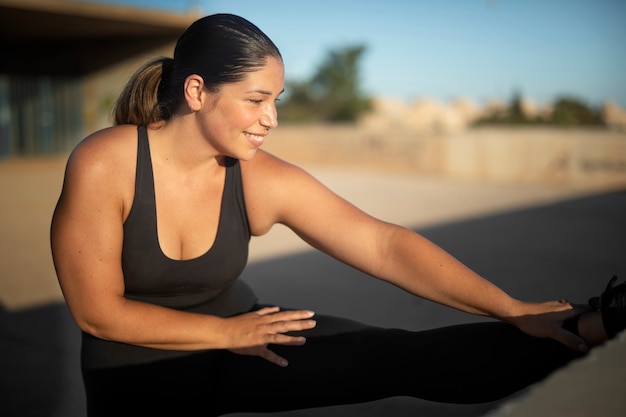Recharge Your Day: 15-Minute No-Equipment Balance Routine for Desk Workers
Sitting for long hours at a desk doesn’t just drain your energy—it can weaken your balance, posture, and overall physical resilience. But you don’t need a gym, equipment, or even much time to reverse the effects. This 15-minute no-equipment balance routine is specifically designed for desk workers who want to feel more alert, stable, and energized—without stepping outside the office or changing clothes.
Why Balance Training Matters for Desk Workers
Prolonged sitting reduces muscle activation, especially in the core, glutes, and legs—key areas that support balance. Over time, this can lead to poor posture, increased fall risk, and low energy. Balance training activates stabilizing muscles, improves circulation, and enhances mind-body awareness, helping you feel more present and energized throughout the workday.
The Science of Micro-Movement
Research shows that short bursts of movement—especially those involving coordination and stability—can boost cognitive function, circulation, and mood. Just 15 minutes of focused balance work can increase blood flow to the brain, reduce stiffness, and reset your nervous system, making it easier to focus and stay productive.
How This Routine Works
This routine is divided into three phases: Warm-Up (3 minutes), Balance & Stability (9 minutes), and Cool-Down & Awareness (3 minutes). Each exercise is equipment-free and can be done in a small space—like beside your desk or in a quiet corner.
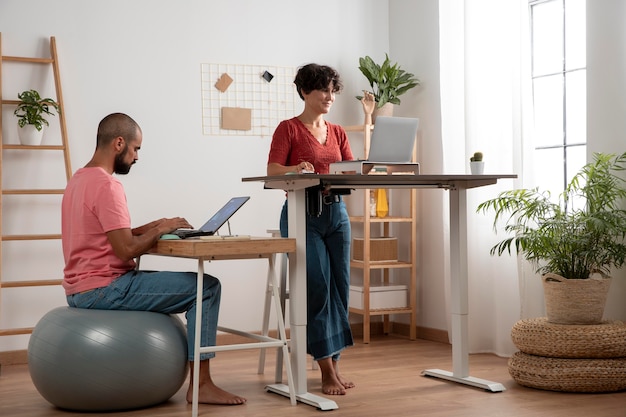
Phase 1: Warm-Up (3 Minutes)
- Neck Rolls (30 seconds): Gently roll your head in a circular motion to release tension from screen gazing.
- Shoulder Rolls (30 seconds): Roll shoulders forward and backward to open up the chest and improve posture.
- Standing March (1 minute): Lift knees alternately while standing to activate the core and improve circulation.
- Side Reaches (1 minute): Stand with feet hip-width apart. Reach one arm overhead and lean gently to the opposite side. Alternate sides to engage obliques and improve spinal mobility.
Phase 2: Balance & Stability (9 Minutes)
Perform each exercise for 1 minute. Focus on form, not speed. Rest for 10 seconds between exercises if needed.
- Single-Leg Stand (1 min per side): Stand on one leg, knee slightly bent. Keep your gaze forward. This builds ankle stability and core control.
- Heel-to-Toe Walk (2 minutes): Walk in a straight line, placing the heel of one foot directly in front of the toes of the other. This mimics a sobriety test and dramatically improves dynamic balance.
- Standing Leg Cross (1 min per side): Cross one leg behind the other and balance on the front leg. Reach arms forward for counterbalance. Enhances hip and core coordination.
- Weight Shifts (2 minutes): Stand with feet shoulder-width apart. Slowly shift weight to the right, then left, then forward and back. This improves proprioception—the body’s sense of position.
- Tandem Stand (1 minute): Stand with one foot directly in front of the other, heel to toe. Hold the position to challenge static balance.
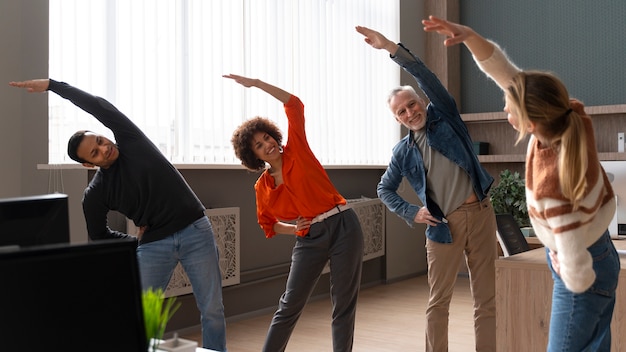
Phase 3: Cool-Down & Awareness (3 Minutes)
- Deep Breathing (1 minute): Inhale for 4 counts, hold for 4, exhale for 6. This activates the parasympathetic nervous system, reducing stress.
- Seated Spinal Twist (1 minute per side): Sit in a chair, twist gently to one side, using the armrest for leverage. Releases spinal tension from sitting.
- Grounding Exercise (1 minute): Stand barefoot if possible, and feel your feet on the floor. Notice weight distribution. This enhances body awareness and mental clarity.
Progress Checks: Track Your Gains
To stay motivated, use these simple benchmarks every week:
- Balance Hold: Can you stand on one leg for 30 seconds with eyes closed? Start with 10 seconds and build up.
- Heel-to-Toe Steps: Count how many steps you can take without wobbling. Aim to increase by 5 each week.
- Energy Level: Rate your midday energy from 1–10 before and after starting the routine. Track improvements over time.
- Posture Check: Notice if you’re slouching less or sitting taller after a week of practice.
Tips for Success
- Do the routine once daily—ideally during a midday slump or after lunch.
- Use a wall or chair for support if needed. Stability improves with practice.
- Pair it with hydration—drink a glass of water before starting to boost circulation.
- Set a daily reminder to build consistency.
Final Thoughts
You don’t need a fitness overhaul to feel better. This 15-minute balance routine is a powerful tool to combat the physical and mental fatigue of desk work. With consistent practice, you’ll notice improved stability, sharper focus, and a renewed sense of energy—no equipment, no excuses.









